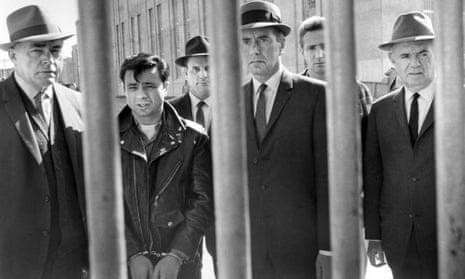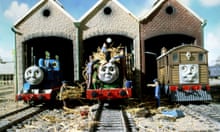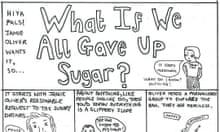No one who has ever seen it forgets the beginning of Richard Brooks’s 1967 adaptation of Truman Capote’s “non-fiction novel” In Cold Blood: a Greyhound bus howls out of an ink-black prairie night, Kansas City its destination, on a screaming trumpet note from Quincy Jones’s score. Inside the darkened bus we glimpse seated silhouettes, and a child making her way towards the rear. She sees a boot sole with two catspaw studs – these will eventually convict their owner of murder – and the outline of a man holding a guitar. He strikes a match on the boot – in the fierce blackness, it registers like Hiroshima – and moves it toward his cigarette and his face, which fills the screen: Robert Blake (who was later an acquitted murder suspect in real life) is Perry Smith, convicted killer of four, the hanged man.
All of In Cold Blood’s virtues are encapsulated in that opening: the black-and-white camerawork of cinematographer Conrad Hall; the music of Jones; and the performance of Robert Blake. Hall’s work draws on news-footage aesthetics, achieving a true-crime tabloid griminess that evokes photographers such as Walker Evans and Robert Frank. Jones sonically anchors his two killers (Smith and Richard “Dick” Hickock, played by Scott Wilson) with unnerving twinned acoustic basses and found sounds. And Robert Blake is Robert Blake, in the keynote performance of his career.
At the helm was writer-director Brooks, an infamous bully and 30-take maniac, coming here as near to perfection as ever he managed. Everything great about In Cold Blood comes from his intelligent corralling of the talents above, and his commitment to realism and accuracy, which went as far as his insistence that the murders be filmed in the town, the house, indeed, the very rooms in which they really happened.
However, the movie’s shortcomings also derive from Brooks, who was famous for shunning his collaborators’ contributions. (“Keep it to yourself,” he told his cast and crew on day one of Looking For Mr Goodbar in 1977. “It’s my fucking movie, I’m going to make it my way!”) Like his mentor John Huston, Brooks adapted far too many Great Books – Lord Jim and The Brothers Karamazov were notable failures – and worked without a co-writer to apply the brakes or gas. His introduction of a reporter, “Mr Jensen”, to help explain large tracts of In Cold Blood is the characteristic failed innovation here; Jensen screams “device!”. Brooks also consulted psychiatrists about the killers, and throws in cod-psychological explanations that have dated horribly. Yet here he largely saved himself from himself, and created this near-masterpiece.
Film history footnote: In Cold Blood marked the first appearance in a studio-financed movie for the terms “pussy”, “bullshit”, “jacking off”, and “diarrhoea”. Let us praise, too, Brooks’s contribution to the end of cinematic prudishness.








Comments (…)
Sign in or create your Guardian account to join the discussion